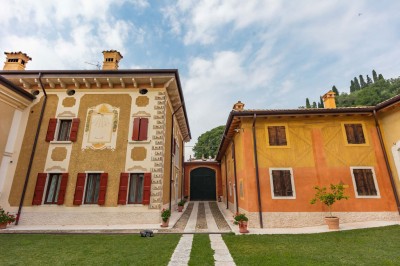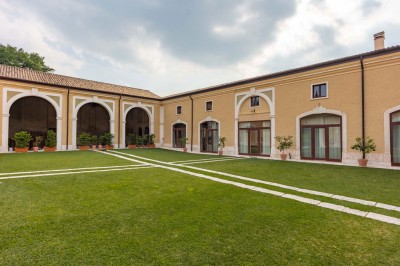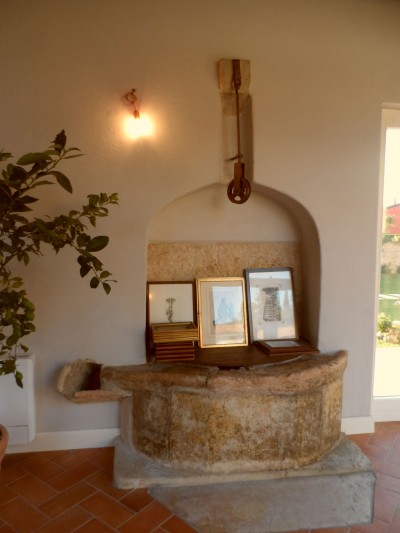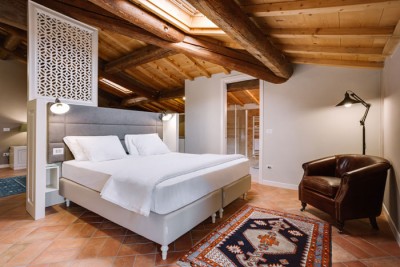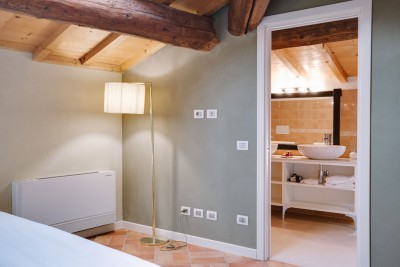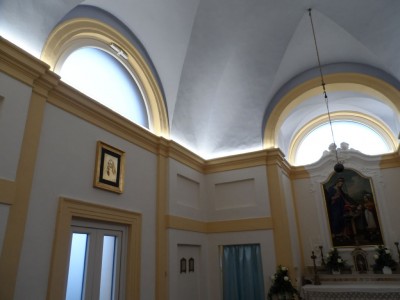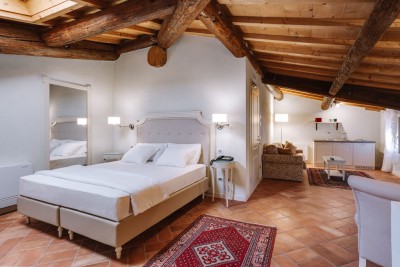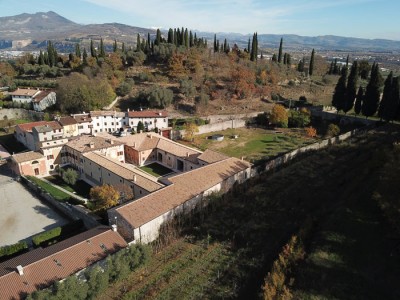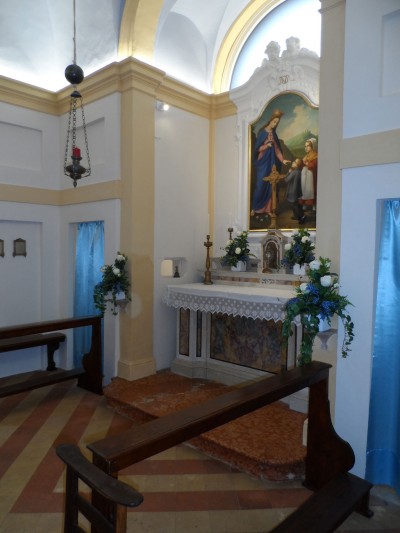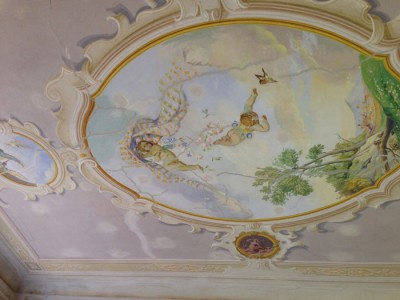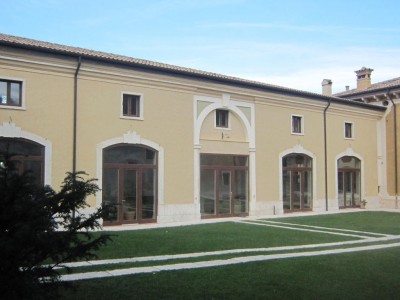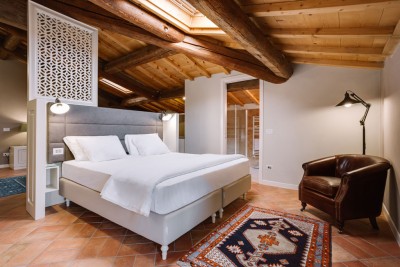Contact the abode
VILLA PADOVANI AND THE ‘CORTE DEI FRATI’ FRIARS’ COURT IN PASTRENGO
Villa Padovani is nestled between Verona and Lake Garda in the small town of Pastrengo, in a special part of the world where it is possible to experience the emotion of staying in an authentic Venetian Villa. It is a place where you can fall under the spell of its magical silence. It is an exclusive, indeed unique, location brimming over with history, art, and beauty. Villa Padovani, which is owned by the Padovani family, also houses within its walls the historic ‘Corte dei Frati’ Friars’ Court, which in the distant past was a defensive stronghold, as well as being a haven of peace and spirituality, and a place of familial redemption. It has been home to so much history over the centuries and now awaits you, to write a new chapter of history together and create a host of happy memories.
Outside, you will find a large courtyard surrounded by lush greenery; indoors, there is an atmosphere of enveloping and intimate tranquillity. The architectural structure of this historic building perfectly reflects the Padovani family's sense of hospitality throughout.
You can expect to experience a sense of completeness here amidst the calm, intimate and welcoming atmosphere, which blends tradition with comfort and presents precious elements in an understated fashion. Here at Villa Padovani, we believe that true luxury means being able to dedicate time to yourself. Much time has passed, and there is much more of it to follow. But what we cherish most is the time you will spend here, either alone or with your loved ones. Improving the quality of our guests' stay here is what we love to make our mission, enabling you to enjoy the best visit possible.
We like to interpret the verb "to host" according to its original meaning: to cherish. And at Villa Padovani, where so much history and so many events have been ‘hosted’, we will be sure to cherish your time with us.
THE HISTORY OF VILLA PADOVANI AND THE ‘CORTE DEI FRATI’
Very little is known about the origins of the rural court of Piovezzano, commonly known as Ca' dei Frati or Corte Ronzetti. It has been a labour of love by the Padovani family to piece together its history so that its story can continue to be passed on down the generations. It is a location that fully deserves to be recognised and valued as it once was.
Its architectural structure, in terms of its typology, is reminiscent of the closed courtyards that were widespread throughout Italy during the medieval period. Ca' dei Frati respects all the characteristics which were necessary for living within a closed courtyard at that time: the presence of ovens and wells indicates that sustenance was provided for a large number of people, and the remains of the surviving arched openings – now sealed, but suggestive of its medieval layout – in the outer wall of the complex located on the left as once enters, attest to its defensive role. The small house, situated to the north of the main villa, therefore almost certainly dates back to medieval times.
This is also reflected in the mural painting on the façade, which hails back to the renovation work carried out in the early 20th century and sought to decoratively depict what would have been a typically medieval brick wall, with large openings blocked by a fake wooden framework and diagonal crossbeams. Over the centuries, many endeavours were made to embellish the original medieval structure of the property, primarily dating back to the 18th and then to the 19th century. Brugnoli, in his volume on Pastrengo, noted that the courtyard used to belong to the Marinelli and Cagozzi families, and was later owned by the Redemptorists or Congregation of the Most Holy Redeemer. No official documents have come to light regarding these ‘Redentoristi’, although the name "Ca' dei Frati" is still used by the elders of Pastrengo to refer to the courtyard, which may reasonably attest to their ancient ownership and presence in the courtyard. It is probable that the court was used as a functional location for independent and self-sufficient community life, with its chapels, ovens and wells, etc. The Redemptorists may have also used the courtyard as a place of retreat for spiritual exercises and meditation, given its secluded nature and separation from the actual headquarters of the Congregation, which would have been heavily populated at the time.
How long the Congregation remained the owner of the courtyard is unclear, but we do know that the Ronzetti family, the latest owners, were already settled there by 1932. This was the year in which the renovation work they undoubtedly desired to carry out first began, and is attested by the inscription above the entrance door of the main house facing the western courtyard: ANNO DOMINI MXMXXXII. During that year, Piero Ronzetti completely rebuilt the main villa from scratch, although without altering its original layout. He restyled the exterior of the small northerly house, adopting the decorative features of what in Italy was called 'Liberty' style, the country’s variant of Art Nouveau, which in the Verona area particularly from the 1930s onwards conformed to a type of neo-historicism with an international and predominantly Art Deco influence, drawing inspiration from classical tradition. In this specific case, the property also bears some relation to the eighteenth century, as evidenced in the stucco pediments above the windows and the large, coarse-grained stucco panels, which are shaped into stylised cartouches, reminiscent of 18th-century designs.
There is also a reference to the strong Sanmichelian tradition in the Verona area, noticeable in the corner elements with faux stone blocks arranged in an offset pattern. Mural painting was used both internally and externally during the renovation of Ca' dei Frati, which was intended to tie in with the Veronese tradition that has always employed this type of decoration, not purely for its own sake but also for the benefit of the local community. The display of the family coat of arms is a case in point, emphasising Piero Ronzetti’s new status as landowner.
The same applies to the interior decorations adorning most of the rooms, with friezes placed below the ceiling, as well as the large oval in the ceiling of the entrance hall, depicting Pastrengo amidst a flight of angels. Ronzetti’s 20th-century renovation work corresponds to the evolution of dwellings commissioned by the upper bourgeoisie, which began in the early 20th century with the construction of large Palazzos, later transformed into rental properties, followed by the creation of wholly private villas which were not to be shared with anyone else. Villa Padovani is an example of a Venetian villa, built according to an already pre-established context.
FACILITIES AND SERVICES: STAYING IN A VILLA VENETA
Staying in one of our prestigious suites means immersing yourself in centuries of art, history and architectural flourishes. Almost all the rooms inside the main house are elaborately decorated with mural paintings in the Veronese tradition, which we are pleased to report continue to be in reasonably good condition.
SERVICES AVAILABLE FOR GUESTS
Guests staying at Villa Padovani are guaranteed comfortable suites with numerous amenities. The following services are available:
Air conditioning
Private bathroom
Wi-Fi
Flat screen TV
Central heating
Safe
Telephone
Hairdryer
Parking
Garden
Minibar
Breakfast
SPA AND WELLNESS CENTRE
Guests staying at Villa Padovani can enjoy complimentary access and free use of the wellness centre at the Boffenigo Small & Beautiful Hotel Thermae, a splendid resort immersed in nature, located in Costermano sul Garda and owned by the Padovani family.
THE RESTAURANT
Boffenigo Small & Beautiful Hotel Thermae also has an extraordinary high-quality restaurant and exclusive rooms, available to guests staying at Villa Padovani.

